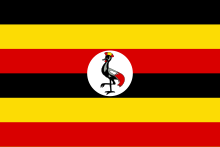East African drug trade
[3] Such data shows that East African trade is constantly growing, and that countries have been increasingly responding to illicit drug trafficking.
Historical trade routes through the Indian Ocean to Asia and through sub-Saharan Africa have facilitated the flow of legal goods for many years.
[4] In the 1970s, however, due to negative effects of the African debt crisis and its associated structural adjustment programs, legitimate routes of commerce have increasingly become conduits of illicit substances with loosened interference from authorities.
Weak law enforcement operations and relative new exposure to illegal drug trade throughout the region have unequipped governments to prevent smuggling.
Moreover, corruption has encouraged lucrative illegal operations, as elections in countries such as Kenya have been funded by profits from illicit drug trade to gain greater political power.
Starting in the early 2000s, white crest heroin became very common in East Africa itself for both domestic use and international trafficking, especially in Kenya and Tanzania.
[8] Third, East Africa lacks sufficient trafficking control measures, which have allowed actors of drug trade to travel in and out of the region with greater ease.
[14] Coastal resorts in East Africa saw an influx of European, South African, and American tourists, who sparked demand for marijuana and heroin in the region.
[16] This change in status has made Kenya a major transfer point, especially for flights from neighboring East African countries like Uganda, Tanzania, Ethiopia, and Rwanda.
[18] Drug trafficking through the Bole International Airport is particularly high because the Counter Narcotics Operations Unit has significant infrastructural problems.
[20] Discreetly packaged drugs, including opium, heroin, and methamphetamine from Afghanistan travels to ports on the Makran Coast, which lies along the southern borders of Iran and Pakistan.
[21] From there, the fishing vessels travel through the Indian Ocean, and arrive at popular tourist venues in East Africa such as Zanzibar in Tanzania, or Pemba and the Quirimbas islands in Mozambique.
[21] In the latter, low severity of tidal waves and extensive sand dunes in the area allow a conducive environment for smugglers to avoid searches.
[21] Larger quantities of heroin are also trafficked using the same routes, but are concealed in containers carrying motor vehicle parts, appliances, and agricultural products from Pakistan.
[22] Among the variety of drugs that are trafficked in and out of East Africa, the most popular exports include heroin, marijuana, cocaine, methamphetamine, and now khat.
[27] The drug is mainly shipped from Afghanistan and Pakistan through maritime and aerial routes into East African countries such as Kenya and Ethiopia.
Additionally, the International Narcotics Control Board (INCB) indicates that the East African region is a notable conduit for heroin smuggling from Southwest Asia to other parts of the globe.
[29] Marijuana has gained more attention as a topic of medical research across the continent, and many African countries began to discuss the legalization of the drug.
[31] However, illicit cultivation and trade of marijuana is still common throughout East Africa because the growth of these crops allows farmers who face financial barriers to pursue new economic avenues.
[36] Along with heroin, cocaine has been involved in elections in countries such as Kenya, to which the profit derived from its sales has been used to fund campaigns and increase political power.
While authorities in East Africa have not discovered any major operations to manufacture methamphetamine, they have reported minor confiscations of the drug in transit to Asia.
African police agencies have few resources and little capacity to record crime statistics;[8] but when they do, they often do not differentiate between conventional and transnational criminal activity.
[40] Corruption undermines the state's capacity to develop robust institutions that are essential for establishing the rule of law and strong economies.
Moreover, the Journal of International Affairs states concerns about Kenya's growing proneness to corruption as the presence of organized crime groups have expanded.
[6] The combination of the prevalence of HIV, the injection of drugs, and the lack of healthcare and awareness that exists around these dangerous practices suggest a hazardous environment that could contribute to a public health crisis.
[49] Case studies have produced evidence to reaffirm the concern that links the proliferation of illegal drugs and the large youthful population.
Currently, many countries in Africa, such as Tanzania and Mauritius, are developing methadone programs to stem the tide of drug injections, which are a major cause of HIV.
Thousands are now enrolling in these programs in order to overcome addiction, and avoid the threat of HIV infection due to injection by contaminated needles.
[59] Despite recent success and recognition, the Drug Control and Enforcement Authority plans to expand its strategies to address the growing rate of consumption and trafficking of marijuana in Tanzania.
[57] The legislation includes a number of punitive measures to put a halt to the rising rates of illicit drug consumption and trafficking in Uganda.



